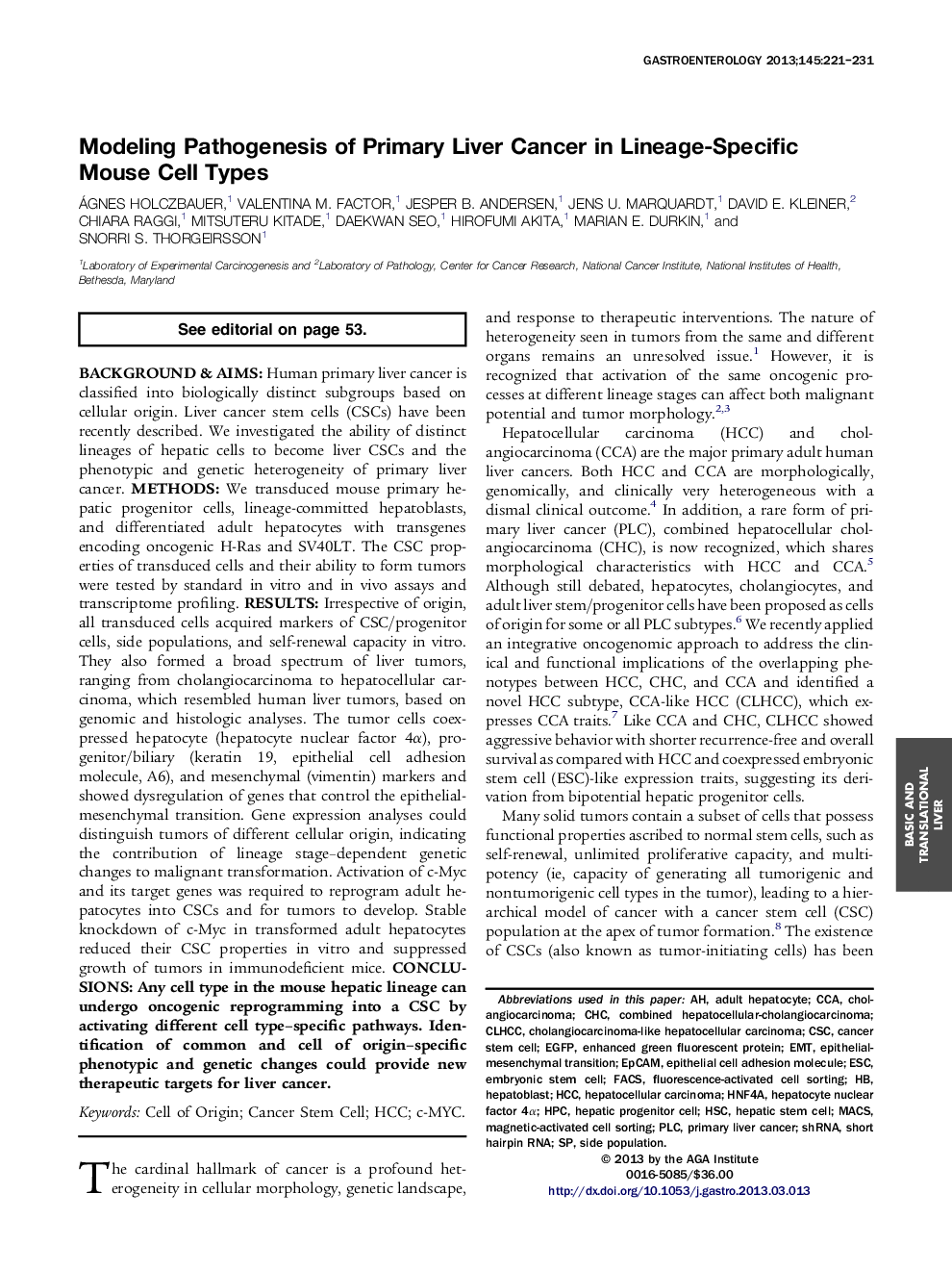| کد مقاله | کد نشریه | سال انتشار | مقاله انگلیسی | نسخه تمام متن |
|---|---|---|---|---|
| 3294090 | 1209833 | 2013 | 11 صفحه PDF | دانلود رایگان |

Background & AimsHuman primary liver cancer is classified into biologically distinct subgroups based on cellular origin. Liver cancer stem cells (CSCs) have been recently described. We investigated the ability of distinct lineages of hepatic cells to become liver CSCs and the phenotypic and genetic heterogeneity of primary liver cancer.MethodsWe transduced mouse primary hepatic progenitor cells, lineage-committed hepatoblasts, and differentiated adult hepatocytes with transgenes encoding oncogenic H-Ras and SV40LT. The CSC properties of transduced cells and their ability to form tumors were tested by standard in vitro and in vivo assays and transcriptome profiling.ResultsIrrespective of origin, all transduced cells acquired markers of CSC/progenitor cells, side populations, and self-renewal capacity in vitro. They also formed a broad spectrum of liver tumors, ranging from cholangiocarcinoma to hepatocellular carcinoma, which resembled human liver tumors, based on genomic and histologic analyses. The tumor cells coexpressed hepatocyte (hepatocyte nuclear factor 4α), progenitor/biliary (keratin 19, epithelial cell adhesion molecule, A6), and mesenchymal (vimentin) markers and showed dysregulation of genes that control the epithelial-mesenchymal transition. Gene expression analyses could distinguish tumors of different cellular origin, indicating the contribution of lineage stage–dependent genetic changes to malignant transformation. Activation of c-Myc and its target genes was required to reprogram adult hepatocytes into CSCs and for tumors to develop. Stable knockdown of c-Myc in transformed adult hepatocytes reduced their CSC properties in vitro and suppressed growth of tumors in immunodeficient mice.ConclusionsAny cell type in the mouse hepatic lineage can undergo oncogenic reprogramming into a CSC by activating different cell type–specific pathways. Identification of common and cell of origin–specific phenotypic and genetic changes could provide new therapeutic targets for liver cancer.
Journal: Gastroenterology - Volume 145, Issue 1, July 2013, Pages 221–231